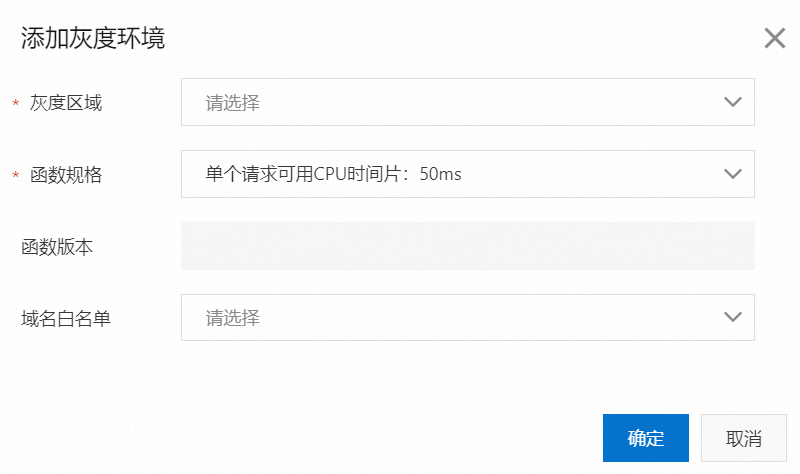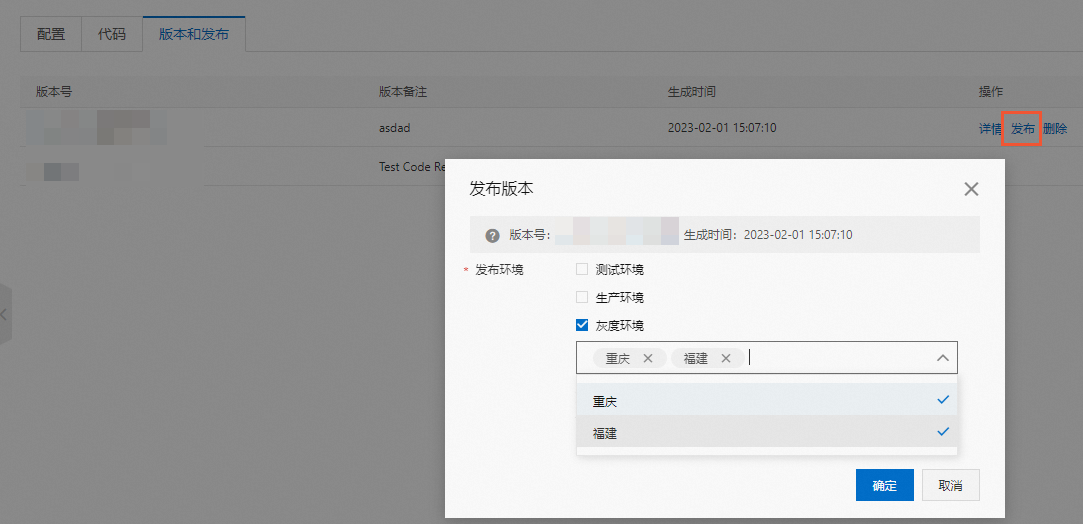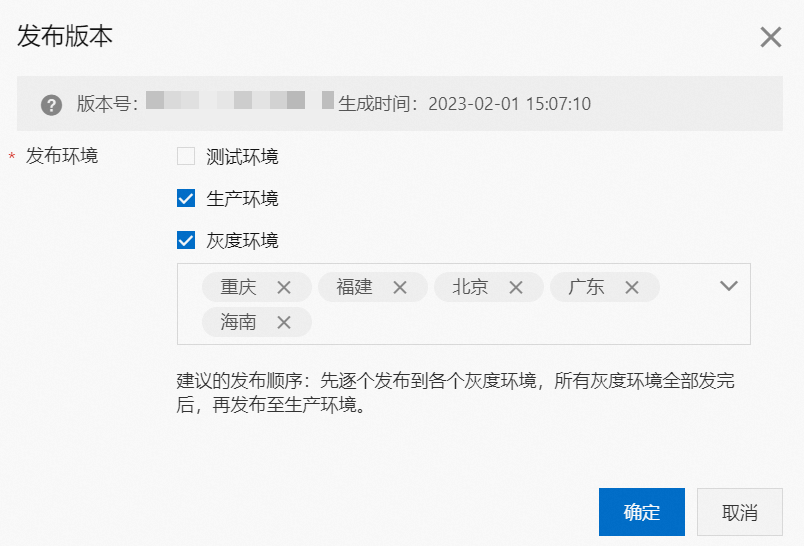灰階環境指在您將編寫好的函數發布至全球節點之前,避免函數出現漏洞導致全球節點受影響,從而僅僅在指定的一個或者多個節點上提前測試函數的一個環境。
功能介紹
為了協助您在發布時控制可能的故障影響,我們提供以地區劃分的灰階環境供您控制發布進度。您可以自訂需要的灰階環境地區(例如選擇北京、福建、湖南、廣東四個地區為灰階環境)。定義了灰階環境後,當您發布代碼版本或配置時,即可單獨選擇任意的灰階環境(例如單獨選擇北京)進行獨立的發布,發布的代碼或配置僅對北京地區的邊緣節點生效,即僅對調度至北京邊緣節點的用戶端請求生效。灰階發布部分地區後,您可以觀察線上業務情況及使用者異常反饋情況,無問題後再繼續擴大灰階範圍或發布至生產環境。
您將部分地區定義為灰階環境後,這部分灰階環境的節點將不再包含在生產環境中(如上圖所示),後續的每次發布都必須對灰階環境單獨發布。例如您將V1版本的函數代碼發布至生產環境,然後定義了北京、福建、湖南和廣東為灰階環境(此時這4個地區的節點已經脫離了生產環境),之後如果將V2版本的代碼直接發布至生產環境,則4個灰階地區的邊緣節點上仍是運行V1版本代碼,您需要將V2版本的函數代碼單獨發布至北京、福建、湖南和廣東4個灰階地區,才能實現所有線上節點都運行V2版本代碼的目標。
如果您定義了灰階環境,則每次發布新代碼或配置,都遵循測試環境、灰階環境、生產環境的發布順序,才能發揮灰階發布的作用。
配置灰階環境
登入DCDN控制台。
說明函數需要網域名稱作為入口供用戶端訪問,網域名稱可使用CDN加速網域名稱或全站加速網域名稱,具體以您網域名稱所在的產品進入對應控制台為準。
在左側導覽列,單擊邊緣函數。
選擇一個函數名稱,單擊详情。在灰階環境 [選配]地區,單擊添加灰度环境。
說明灰階環境被定義時,對應地區的節點將從生產環境剝離,剝離後該地區節點將獨立使用灰階環境配置。
如果有新版本在生產環境發布,所有灰階環境中定義的節點需要單獨重新發布才可以保持和生產環境版本一致。

參數
說明
灰度区域
選擇您需要設定的灰階地區。如果您需要添加兩個或者以上地區,重複執行該步驟即可。
說明全球劃分為35個地區可供您定義為灰階環境使用。
函數規格
單個請求可用CPU時間片:5 ms;RT最大值120秒,可用記憶體128 MB
單個請求可用CPU時間片:50 ms;RT最大值120秒,可用記憶體128 MB
單個請求可用CPU時間片:100 ms;RT最大值120秒,可用記憶體128 MB
說明不同函數規格產生的費用稍有不同。更多資訊,請參見邊緣函數計費說明。
函數版本
建立灰階環境時,灰階環境上啟動並執行代碼版本預設和生產環境對齊。
網域名稱白名單
允許關聯該邊緣函數的網域名稱。例如您設定了example.com,則表示只有example.com的請求可以觸發該函數執行,其他網域名稱的請求將被該函數拒絕。網域名稱白名單預設為空白,表示任意網域名稱都可關聯該函數。支援填寫泛網域名稱。
單擊確定。
使用灰階環境
在發布某一個函數版本時,即可任選配置灰階環境中定義的灰階環境,對灰階環境地區的節點單獨發布。
 說明
說明您選擇福建和重慶2個地區發布版本號碼為1624328628932318493的代碼,則代表只有福建和重慶這兩個地區的邊緣節點生效,只有調度至這兩個地區的使用者請求會命中1624328628932318493版本的代碼。
您完成灰階驗證後希望將代碼發布至全部的線上節點時,需要全選所有您定義的灰階環境和生產環境進行發布,才能覆蓋全部的線上節點。如下圖所示:
